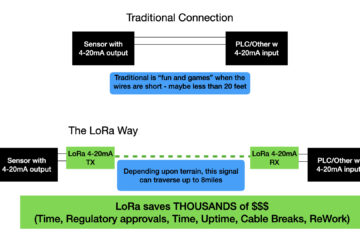Case Study 1: Permian Basin Wireless Pressure Monitoring
- Operator: Mid-sized E&P company
- Challenge: High wiring costs for 50+ wellhead pressure sensors
- Solution: Installed 4-20mA LoRa transmitters (another mfg, but results will be similar)
- Results:
- 85% reduction in installation costs (no trenching/conduit)
- Deployed in 3 days (vs. 3 weeks for wired solution)
- Real-time alerts for pressure drops (reduced downtime by 30%)
Case Study 2: Eagle Ford Shale Tank Level Monitoring
- Operator: Large oilfield services provider
- Challenge: Frequent cable failures in harsh environments
- Solution: Switched to a LoRa based solution
- Results:
- Zero wiring failures in 2+ years
- Battery life exceeded 5 years (no maintenance needed)
- SCADA integration reduced manual checks by 90%
Case Study 3: West Texas Pipeline Leak Detection
- Operator: Pipeline logistics company
- Challenge: Slow response to leaks due to delayed wired sensor data
- Solution: Installed LoRa based flow meters
- Results:
- Leak detection time reduced from 8 hours to 15 minutes
- Saved $250K/year in spill remediation costs
3. How to Get Started
Step 1: Assess Your Current Sensors
- Identify which 4-20mA devices can be replaced with LoRa.
- Prioritize high-maintenance or hard-to-wire locations.
Step 2: Choose a Texas-Based Distributor
- Look for suppliers with:
- Local inventory (avoid 2-4 week lead times)
- On-site support (for troubleshooting)
Step 3: Pilot Test in a Small Section
- Deploy 5-10 LoRa sensors in a single well pad.
- Validate range, battery life, and SCADA integration.
Step 4: Full-Scale Rollout
- Scale across the entire field in phases.
- Train field techs on wireless diagnostics.
Final Thoughts
Texas oilfields are ideal for LoRa wireless adoption due to their vast, remote nature. By working with a local stocking distributor, companies can cut costs, speed up installations, and simplify monitoring—without sacrificing reliability.

0 Comments